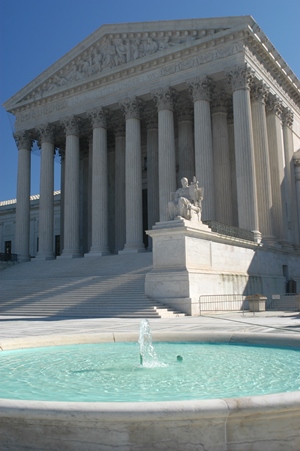Supreme Court Tells EPA Cost Does Matter
Environmental Litigation
by Stephen T. Holzer
818.907.3299
The Environmental Protection Agency’s Mercury and Air Toxics Standards (MATS) placed national limits on mercury and other toxic emissions from power plants. The agency projected MATS to prevent 11,000 premature deaths, 4,700 heart attacks and 130,000 asthma attacks each year.

What the EPA didn’t project, however, was the cost effectiveness of enforcing MATS.
Twenty-three states and other petitioners challenged the Agency’s refusal to consider costs of emissions reduction in a Washington D.C. circuit court, which sided with the EPA, then again at a D.C. Appellate Court which upheld the lower court’s decision. But in June, the U.S. Supreme Court (SCOTUS) sided with the petitioners in Michigan v. Environmental Protection Agency, and remanded the case back to the Court of Appeals to reconsider its decision in light of SCOTUS guidance.
Mercury Cleanup Costs
The central question in this case pertains to the federal Clean Air Act, as amended in 1990. One of the amendments directs the EPA to study public health hazards caused by power plant emissions and to determine whether or not these facilities should be subject to regulation. The Agency must then decree certain floor standards for emissions based on the type of facility in question and on the top-performing 12 percent of those facilities in the category. Section 7412(d)(2) of the Act clearly directs the EPA to consider the costs of reducing emissions.
In 2000 the EPA concluded coal and oil burning power plants need regulation, and reaffirmed this decision in 2012. It issued a Regulatory Impact Analysis, estimating costs of regulation at $9.6 billion per year for the power plants, but did not fully estimate the benefits of emission reduction, which it estimated at $4-6 million.
The EPA found collateral benefits for regulation of the power plants, which would reduce particulate matter and sulfur dioxide in emissions. The Regulatory Impact Analysis estimated those benefits to fall between $37 and $90 billion per year – but these substances aren’t covered under the Clean Air Act, and the Agency did not base its decree for regulation on these additional benefits.
SCOTUS’s 5-4 Opinion
The Supreme Court’s close decision centered on the sometimes ambiguous, yet sometimes particular, wording of the Clean Air Act. On the ambiguous side, §7412(n)(1)(A):
Congress instructed EPA to add power plants to the program if (but only if) the Agency finds regulation “appropriate and necessary”…. One would not say that it is rational, never mind “appropriate,” to impose billions of dollars in economic costs in return for a few dollars in health or environmental benefits.
More to the point, SCOTUS cited this:
Congress called for two additional studies. One of them, a study into mercury emissions from power plants and other sources, must consider “the health and environmental effects of such emissions, technologies which are available to control such emissions, and the costs of such technologies.” §7412(n)(1)(B).
The EPA made several arguments, one being that the Agency shouldn’t have to consider cost when first deciding whether to regulate power plants – costs become a factor in deciding how much regulation is necessary. SCOTUS responded, “By EPA’s logic, someone could decide whether it is “appropriate” to buy a Ferrari without thinking about cost, because he plans to think about cost later when deciding whether to upgrade the sound system.”
Respondents in Michigan asked the Court to consider the potentially $90 billion in collateral benefits EPA published in the Regulatory Impact Analysis, but SCOTUS refused to do so, saying the Court could only consider the “grounds on which the agency acted.”
Significance

Court analysts can and will draw various lessons from the SCOTUS decision.
First, some will argue that this shows the Court majority is returning to a literal reading of statutes and following that literal approach despite policy arguments that administrative flexibility is needed (the above quote from the Clean Air Act says EPA must consider “the costs of such technologies”). However, it is arguably hard to square such a broad conclusion after the Court, in a majority opinion by Chief Justice Roberts, virtually admitted one could, for policy reasons, ignore the plain language of the Affordable Care Act stating that subsidies would only be available for an exchange set up by “the states”, not the federal government.
Perhaps a more accurate interpretation of the approach is that the Court’s conservative majority has decided the Court has historically given substantial deference to EPA and the agency needs a shot across the bow to force the agency to proceed more cautiously, and not assume it can count on such judicial deference in the future.
Yet perhaps a third conclusion is simply that the Court is severely split, roughly 5-4, between conservatives and liberals. The decisions referenced above were decided by one or two votes, with a conservative Justice or two occasionally swinging over to vote with the liberals.
Whatever the analysis, it does seem that EPA regulation may have entered a new era in which more restrictions are placed upon the agency’s scope of action.
Stephen T. Holzer is the Chair of our Environmental Practice Group and a business litigation attorney. Contact him by phone: 818.907.3299, or by email: sholzer@lewitthackman.com.
